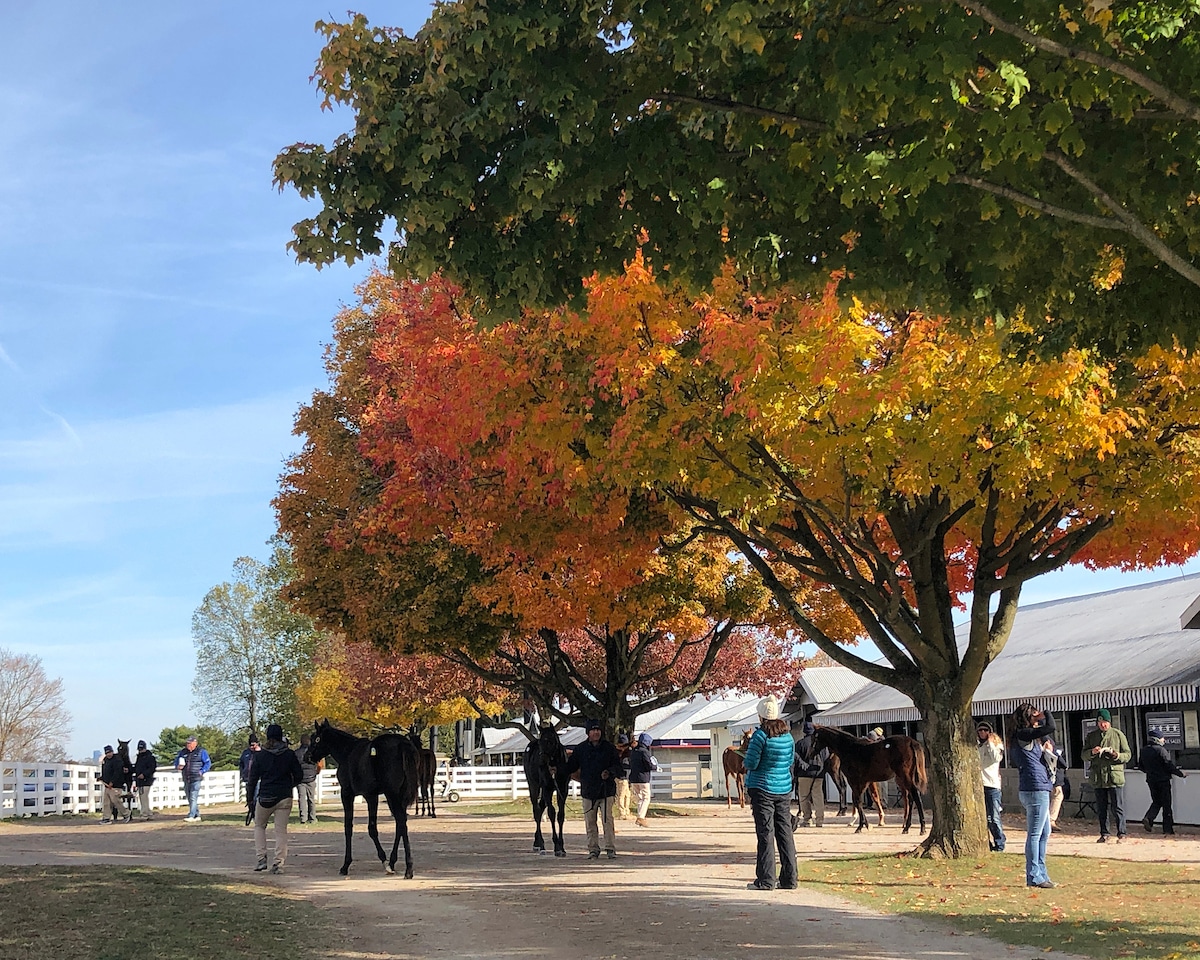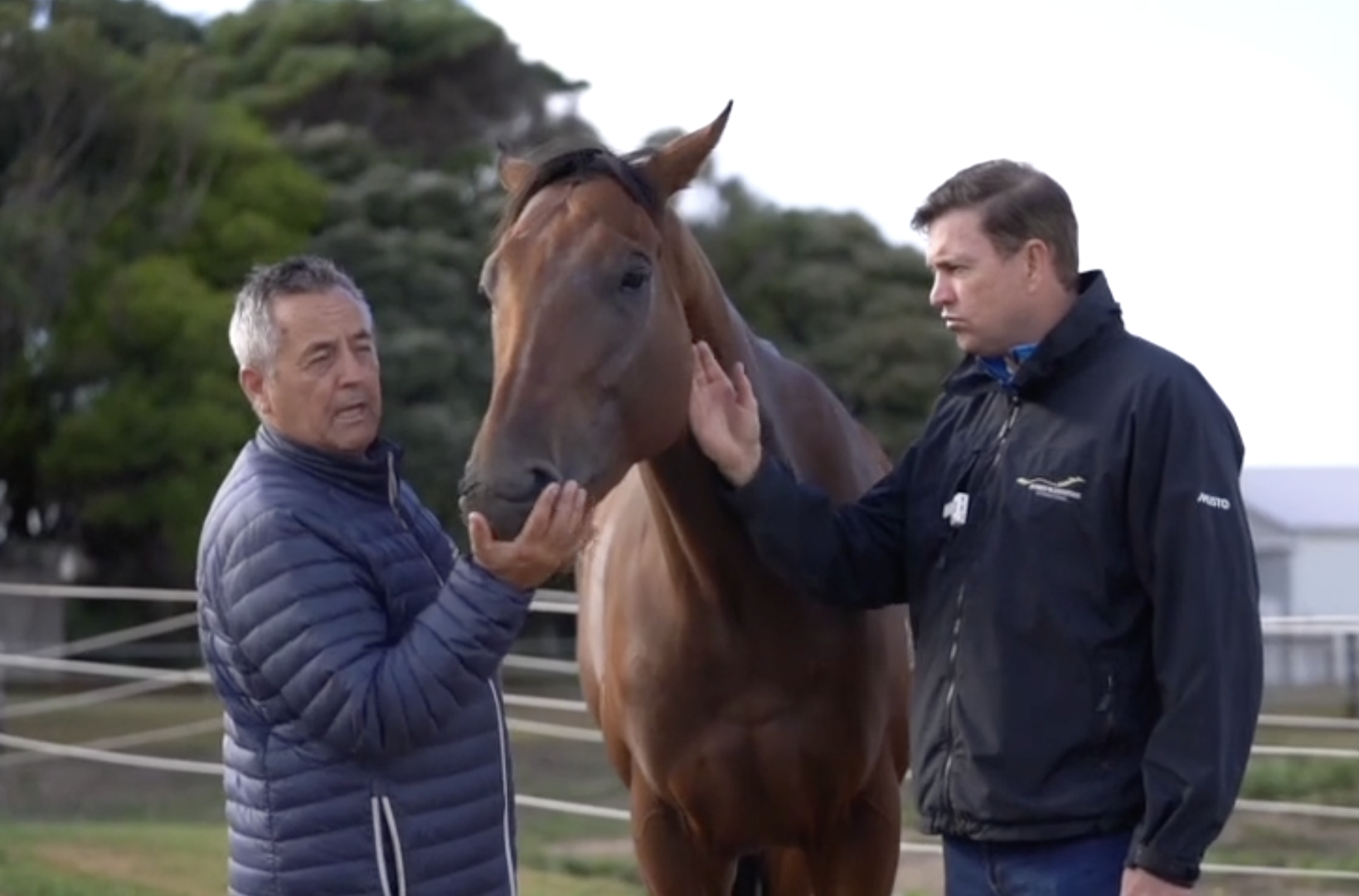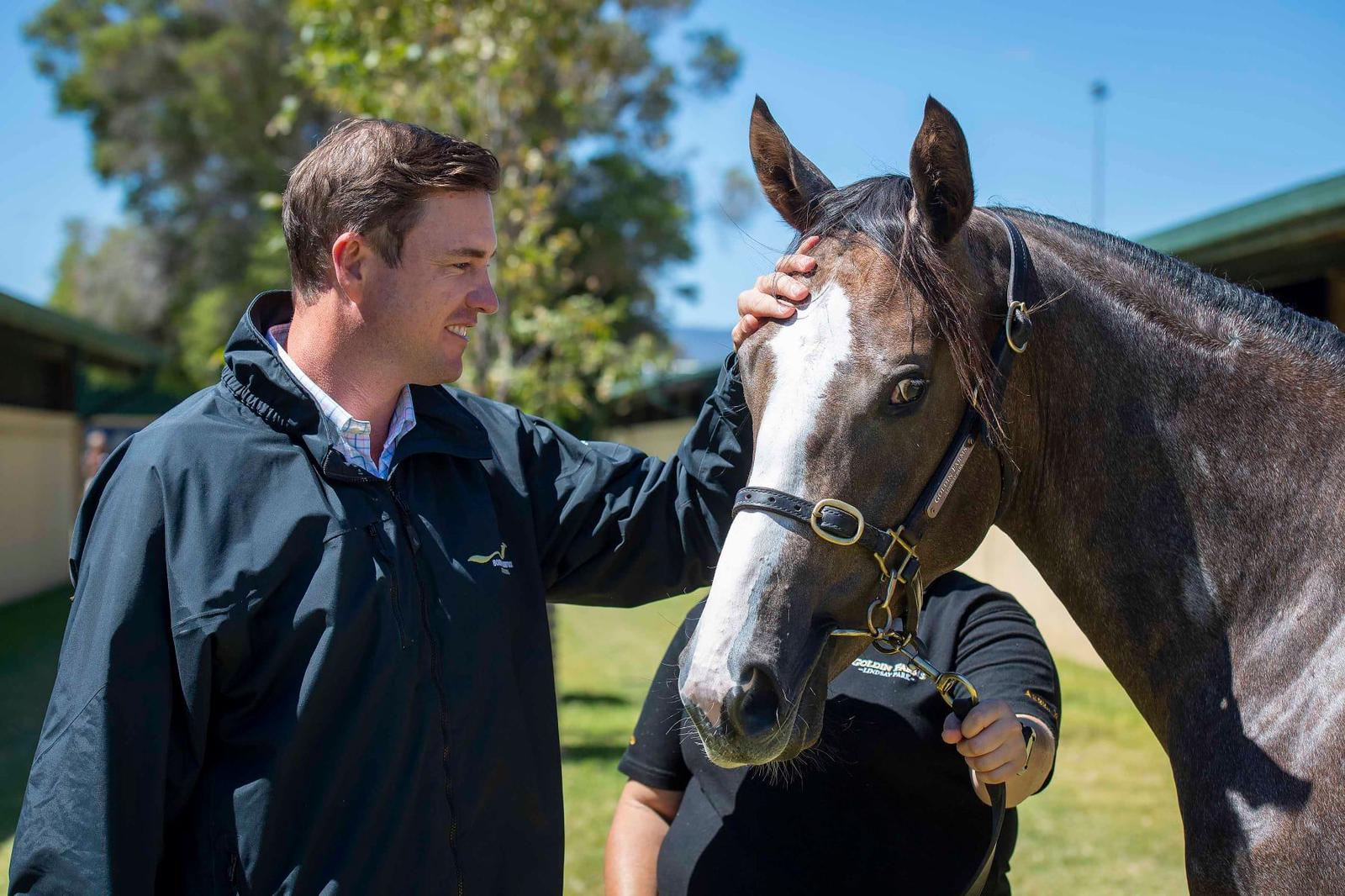• Various front leg conformations can lead to soundness problems during a horse’s career. For instance, a base-narrow horse often correlates with a horse toeing in, causing uneven distribution of weight on the foot. Meanwhile, a pigeon-toed horse generally paddles in its action, which can cause fetlock or sesamoid problems
• However, a number of these characteristics can be corrected before they cause such issues if addressed when the horse is young
Different front leg traits explained
There are various traits in the conformation of a horse’s front legs that can create soundness problems during their career on the racetrack.
Base narrow
This is seen from looking at the front legs when standing directly in front of the horse. If you draw an imaginary line straight down the middle of both legs, from their origin at the chest all the way to the ground, a base narrow horse will have a shorter distance between the lines at the ground than they would at the top of the leg. This usually correlates with a horse toeing in – thus there is an uneven distribution of weight on the foot itself. This results in feet issues as well as other issues up the leg at the fetlock.
Base wide
This is the opposite of base narrow and occurs when the imaginary line is wider at the ground, where the feet are, than at the top of the leg at the chest. This is usually as a result of a horse with a narrow chest and generally coincides with the horse toeing out. This results in the horse generally landing on the inside section of the foot, which in turn places more pressure up the inside of the leg, particularly the fetlock.
Pigeon toed
This is seen from looking at the front legs when standing directly in front of the horse. It occurs when the toes of the feet are pointed towards each other. This conformation can sometimes be corrected while the horse is still a foal through trimming the feet, although in extreme cases, surgery is sometimes used to correct this condition when the horse is young. A pigeon-toed horse generally paddles with its action and this can cause problems if they hit their fetlocks or sesamoids while in flight.
Toed out
This is seen from looking at the front legs when standing directly in front of the horse. It occurs when the toes of the feet are pointed away from each other. This is usually a result of a conformational defect in the leg – something which can be corrected as a foal. This conformation results in the horse swinging the foot in a circular motion, which can cause interference and injury to the other leg as well as uneven distribution of weight through the leg on impact.
Back at the knee
This is seen from looking at the front legs when standing side on to the horse. It is a backward deviation of the knee joints themselves. It is a conformational defect that places great pressure not only on the various knee bones, but all the ligaments and tendons behind the knee. Under full weight the knee is not evenly distributing the weight through the leg, placing great strain on all the bones, ligaments and tendons that are associated with the knee.
Over at the knee
This is seen from looking at the front legs when standing side on to the horse. It is a forward deviation of the knee joints themselves. This results in less damage to the knees and tendons than a horse back at the knee. It is generally a result of contraction of the knee flexors which puts more pressure on the sesamoids and tendons. Many foals have this condition, although they straighten and correct as they get older.
Knock knees
This is seen from looking at the front legs when standing directly in front of the horse. It occurs when there is an inward deviation of the knees, which in turn results in an outward deviation of the cannons and fetlocks. This conformation places an increased strain on the inside of the knee under the pressure of weight bearing.
Offset knees
This is seen from looking at the front legs when standing directly in front of the horse. It occurs when the forearm and cannon bones do not line up directly. This can be in varying degrees and results in an uneven distribution of weight through the knee. This usually results in splints appearing on the cannon bones and other bone issues with the knees themselves. Some horses that are lighter in condition can get away with this, although for larger horses, it can be very difficult to keep them sound.
Tied in knees
This is seen from looking at the front legs when standing side on to the horse. This occurs when the flexor tendon is too close to the cannon bone and thus places significantly more pressure on the tendons and restricts movement of the leg.
Cut out under knees
This is seen from looking at the front legs when standing side on to the horse. This occurs just below the knee at the front of the cannon bone. This is a weakness as the cannon bone does not line up with the knee.
Standing under in front
This is seen from looking at the front legs when standing side on to the horse. It occurs when the front leg is not at 90 degrees and is positioned back under the body. This places more pressure on the front legs and limits the stride length.
Short upright pasterns
This is best seen from looking at the front legs when standing side on to the horse. This conformational trait results in increased concussion up the leg on impact which can cause problems with the fetlocks and knees.
Long sloping pasterns
This is best seen from looking at the front legs when standing side on to the horse. This conformation occurs when the pastern is on an angle less than 45 degrees and the pastern is longer than normal in relation to the leg length. This results in increased strain on the ligaments, tendons and sesamoids when under load.







